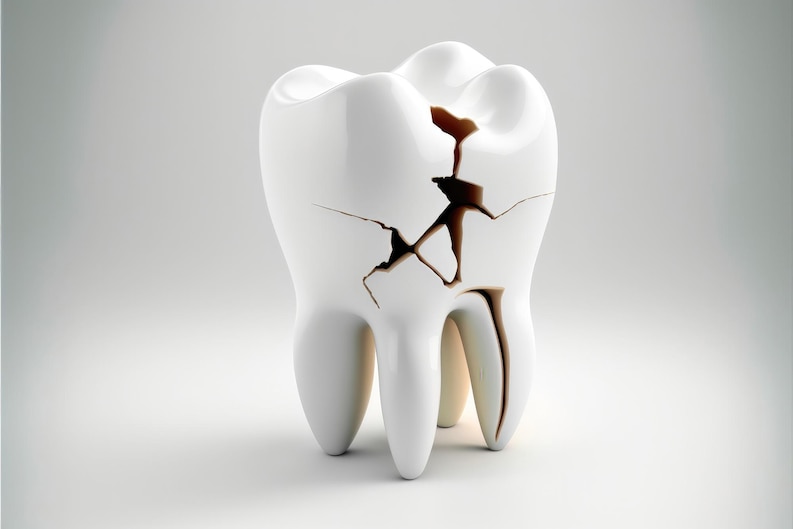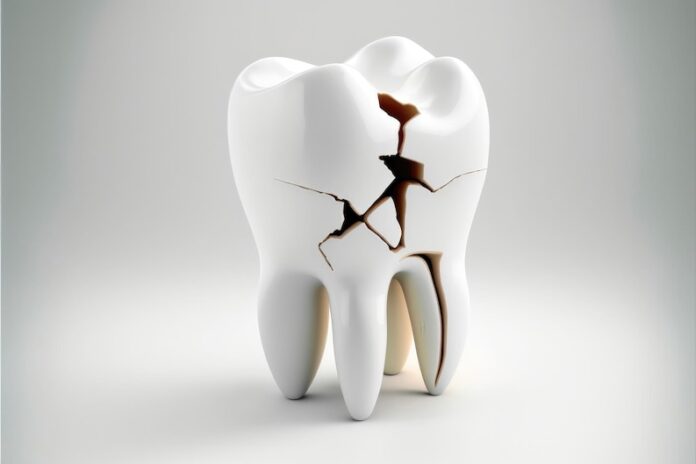Introduction: Understanding Tooth Infections and Their Risks
Tooth infections, also known as dental abscesses, are a common dental problem that can cause significant pain and discomfort. They occur when bacteria enter the tooth through a cavity or crack and infect the pulp, which is the innermost part of the tooth that contains blood vessels and nerves. If left untreated, tooth infections can lead to serious complications and even spread to other parts of the body.

The Causes of Tooth Infections and How They Develop
Tooth infections develop when bacteria enter the tooth through a cavity, crack, or other opening in the enamel. The bacteria then multiply and spread into the pulp, causing an infection. Common causes of tooth infections include poor oral hygiene, untreated cavities, cracked or broken teeth, and gum disease.
Poor oral hygiene is one of the main culprits behind tooth infections. When we don’t brush and floss regularly, plaque builds up on our teeth, providing a breeding ground for bacteria. Over time, this can lead to cavities and eventually tooth infections.
Untreated cavities are another common cause of tooth infections. When a cavity is left untreated, it can grow larger and deeper, eventually reaching the pulp of the tooth. Once the bacteria reach the pulp, an infection can develop.
Cracked or broken teeth can also lead to tooth infections. When a tooth is cracked or broken, it creates an opening for bacteria to enter and infect the pulp. This is why it’s important to seek dental treatment for cracked or broken teeth as soon as possible.
Lastly, gum disease can contribute to tooth infections. Gum disease causes inflammation and infection in the gums, which can spread to the roots of the teeth and lead to abscesses.
Symptoms of Tooth Infections: What to Look Out For
The symptoms of a tooth infection can vary depending on the severity of the infection and the individual. However, there are some common signs to look out for. These include:
– Severe toothache: A toothache that is persistent and throbbing is a common symptom of a tooth infection. The pain may worsen when biting down or applying pressure to the tooth.
– Swelling: Swelling in the face, jaw, or neck can indicate a tooth infection. This swelling may be accompanied by redness and tenderness.
– Sensitivity to hot and cold: If you experience heightened sensitivity to hot and cold temperatures, it could be a sign of a tooth infection.
– Bad breath or a foul taste in the mouth: The bacteria causing the infection can produce an unpleasant odor or taste in the mouth.
– Fever: In some cases, a tooth infection can cause a low-grade fever.
It’s important to note that not everyone will experience all of these symptoms, and some individuals may not have any symptoms at all. This is why regular dental check-ups are crucial for detecting and treating tooth infections early.
The Dangers of Leaving Tooth Infections Untreated
Leaving a tooth infection untreated can have serious consequences for your oral health and overall well-being. One of the main risks of untreated tooth infections is the spread of infection to other parts of the body. The bacteria from the infected tooth can enter the bloodstream and travel to other organs, leading to potentially life-threatening complications such as sepsis or brain abscesses.
In addition to the risk of systemic infection, untreated tooth infections can also cause damage to the surrounding teeth and tissues. The infection can spread to neighboring teeth, causing them to become infected as well. This can result in multiple abscesses and further complications.
Furthermore, untreated tooth infections can lead to bone loss in the jaw. The infection can erode the bone that supports the teeth, leading to loose teeth or even tooth loss.
How Long Can a Tooth Infection Go Untreated?
The length of time a tooth infection can go untreated depends on several factors, including the severity of the infection and the individual’s immune system. In some cases, a tooth infection can progress rapidly and cause severe symptoms within a matter of days or weeks. In other cases, the infection may progress more slowly and cause milder symptoms over a longer period of time.
It’s important to note that even if a tooth infection is not causing severe symptoms, it should still be treated as soon as possible. Delaying treatment can allow the infection to worsen and increase the risk of complications.
The Progression of a Tooth Infection Over Time
A tooth infection can progress over time if left untreated. Initially, the infection may start as a small abscess in the pulp of the tooth. As the infection spreads, it can cause the pulp to become inflamed and swollen, leading to increased pain and sensitivity.
If the infection is not treated, it can continue to spread to the surrounding tissues and bone. This can result in the formation of a periapical abscess, which is an abscess that forms at the tip of the root. The abscess may cause swelling and tenderness in the gums and jaw.
As the infection progresses, it can lead to further complications such as cellulitis, which is a bacterial skin infection. Cellulitis can cause redness, swelling, and pain in the face and neck.
Complications of Advanced Tooth Infections
Advanced tooth infections can lead to several complications that can impact overall health. One of the most serious complications is sepsis, which is a life-threatening condition that occurs when an infection spreads throughout the body via the bloodstream. Sepsis can cause organ failure and death if not treated promptly.
Another potential complication of advanced tooth infections is Ludwig’s angina, which is a severe infection that affects the floor of the mouth and the neck. This condition can cause difficulty breathing and swallowing and may require emergency medical intervention.
In rare cases, a tooth infection can spread to the brain and cause a brain abscess. This is a serious condition that requires immediate medical attention. Symptoms of a brain abscess may include severe headache, fever, confusion, and neurological deficits.
When to Seek Emergency Dental Care for a Tooth Infection
In some cases, a tooth infection may require emergency dental care. It’s important to seek immediate treatment if you experience any of the following:
– Severe pain that is not relieved by over-the-counter pain medication
– Swelling that is rapidly worsening or spreading
– Difficulty breathing or swallowing
– High fever
– Signs of a brain abscess, such as severe headache, confusion, or neurological deficits
If you are unsure whether your symptoms warrant emergency care, it’s best to err on the side of caution and seek medical attention.
Treating a Tooth Infection: What to Expect
The treatment for a tooth infection will depend on the severity of the infection and the individual’s overall health. In most cases, treatment will involve draining the abscess and removing the infected pulp from the tooth. This can be done through a root canal procedure or by extracting the tooth.
During a root canal procedure, the dentist will remove the infected pulp from the tooth and clean out the root canals. The canals will then be filled with a special material to prevent reinfection. In some cases, a crown may be placed on the tooth to restore its strength and appearance.
If the infection is severe or if there is extensive damage to the tooth, extraction may be necessary. After the tooth is extracted, the dentist may recommend replacing it with a dental implant or bridge to restore function and aesthetics.
Preventing Tooth Infections and Maintaining Good Oral Hygiene
Preventing tooth infections starts with maintaining good oral hygiene. This includes brushing your teeth at least twice a day, flossing daily, and using mouthwash to kill bacteria. It’s also important to visit your dentist regularly for check-ups and cleanings.
In addition to good oral hygiene, there are several other steps you can take to prevent tooth infections. These include:
– Avoiding sugary and acidic foods and drinks, as they can contribute to tooth decay
– Quitting smoking, as smoking can weaken the immune system and increase the risk of infections
– Wearing a mouthguard when participating in sports or other activities that could cause dental injuries
– Seeking prompt treatment for cavities, cracked teeth, or other dental problems
By taking these steps, you can reduce your risk of developing a tooth infection and maintain good oral health.
Conclusion
Tooth infections are a common dental problem that can cause significant pain and discomfort. They develop when bacteria enter the tooth through a cavity or crack and infect the pulp. If left untreated, tooth infections can lead to serious complications and even spread to other parts of the body.
The symptoms of a tooth infection can vary but may include severe toothache, swelling, sensitivity to hot and cold, bad breath or a foul taste in the mouth, and fever. Leaving a tooth infection untreated can have serious consequences, including the spread of infection to other parts of the body, damage to surrounding teeth and tissues, and bone loss in the jaw.
Treatment for a tooth infection typically involves draining the abscess and removing the infected pulp from the tooth. This can be done through a root canal procedure or by extracting the tooth. Preventing tooth infections starts with maintaining good oral hygiene and seeking prompt treatment for dental problems. By taking these steps, you can reduce your risk of developing a tooth infection and maintain good oral health.



